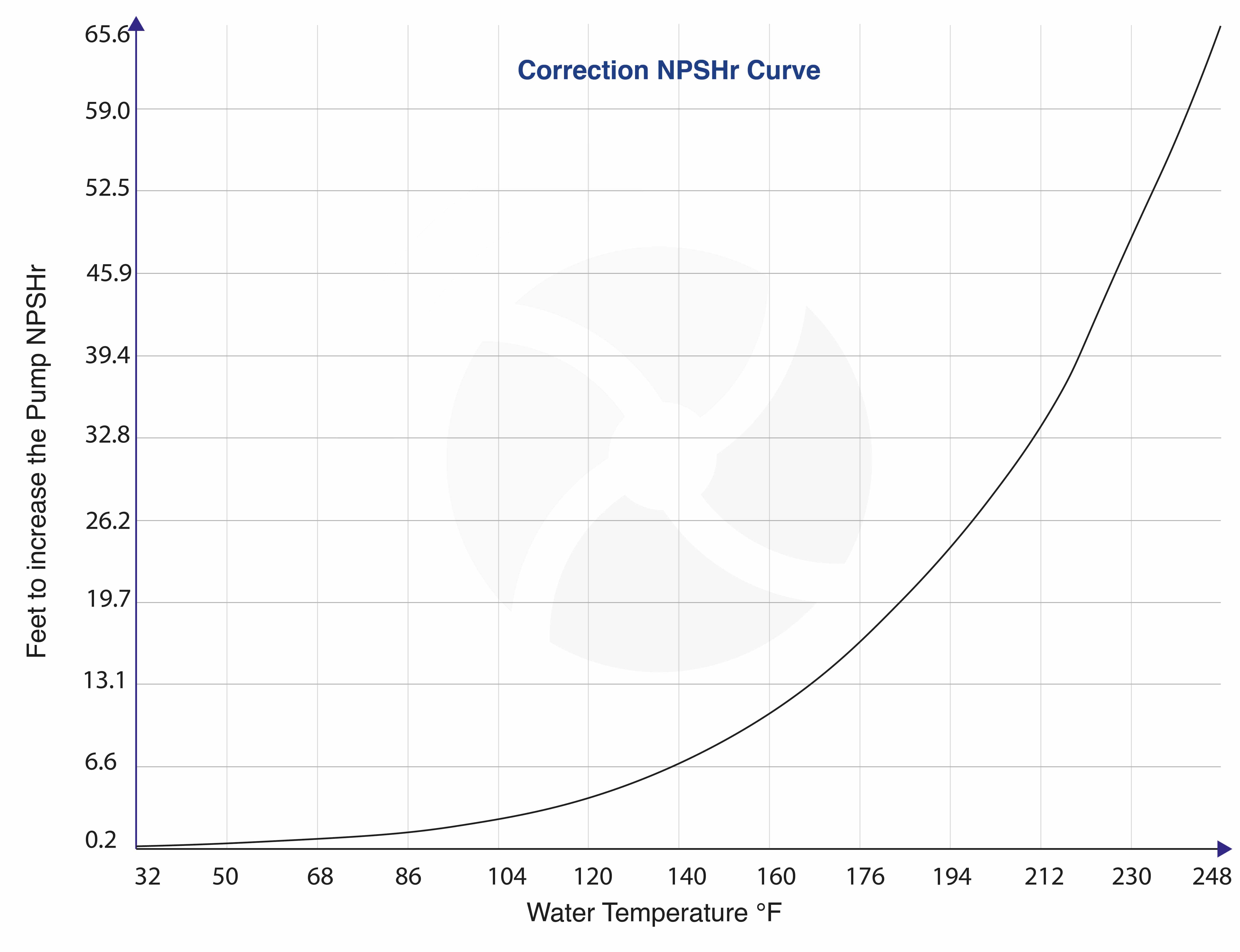Headlines
BLOG | Pumping High-Temperature Liquids
Monday, December 18, 2023
Pumping liquids at high temperatures demands extra attention and an understanding of all the associated issues. Elevated liquid temperatures alter the pump's characteristics, but it's also crucial to consider factors like material expansion and operational safety. In this blog, our goal is to delve deeper into this and focus on the pumping of hot water.
How do we prevent hot water from boiling?
Centrifugal pumps are adept at handling liquid but not vapor. Under normal conditions (atmospheric pressure), water boils at 212 degrees Fahrenheit. So, how do we ensure water remains a liquid above 212 degrees Fahrenheit? The vapor pressure for water graph below illustrates the water's phase diagram, where the horizontal axis represents temperature and the vertical axis represents pressure. It demonstrates that by reducing the pressure significantly, we can bring water to a boil at temperatures below 212 degrees Fahrenheit. Conversely, increasing the pressure ensures water remains in its liquid form even at temperatures exceeding 212 degrees Fahrenheit.In conclusion, by guiding the water into the pump with adequate pre-pressure, we can maintain it in a liquid state, enabling the pump to function without experiencing cavitation.

The pump's NPSHr characteristic changes at higher temperatures
Establishing pre-pressure isn't solely necessary at an average temperature surpassing 212 degrees Fahrenheit. Beyond an average temperature of 100 degrees Fahrenheit, the suction height (if applicable) should be seriously considered. Temperatures exceeding 175 degrees Fahrenheit practically render suction from a lower level impossible, necessitating pre-pressure.Centrifugal pumps undergo testing with water at 65 degrees Fahrenheit, based on which the pump manufacturer generates performance curve charts. Among these curves is the NPSHr curve, aiding in determining the available suction head of the relevant pump. However, when pumping hot water, the NPSHr curve undergoes changes. Simply put, it shifts disproportionately with the fluid temperature.
With the graph-corrected NPSHr curve, determining how the standard pump curve changes with water temperatures becomes easier.
Pump materials
Centrifugal pumps come in various materials like cast iron, bronze, stainless steel, etc., selected based on the medium to be pumped. Each material has its coefficient of expansion, indicative of its expansion upon heating. When constructing a centrifugal pump, considering the coefficient of expansion of chosen materials is crucial; otherwise, damage may occur, especially in narrow clearances. Flange connections in suction and discharge pipes also undergo expansion due to high temperatures.Additionally, bearings and gaskets within a pump must withstand the average temperature. Centrifugal pumps used for high temperatures often employ a bearing frame or flexible coupling rather than being close-coupled. This prevents potential overheating of the electric motor due to its proximity to the heat source. Hence, using standard submersible pumps at an average temperature above 110 degrees Fahrenheit is ruled out, as the electric motor could overheat and fail. Bearing frames should feature oil-lubricated bearings because grease viscosity decreases at higher temperatures, leading to its flow out of the bearing, causing a loss of lubricating effect.
Many centrifugal pumps feature rubber (NBR) or paper gaskets, unsuitable for temperatures exceeding 240 degrees Fahrenheit. For temperatures surpassing 240 degrees Fahrenheit, it's advisable to use PTFE materials.
The mechanical seal also demands additional attention at high temperatures, particularly the elastomers it contains, which must resist high temperatures.

Safety
Apart from adequately shielding the hot parts of the pump and piping system, understanding additional safety aspects is crucial. For this reason, we always recommend to carefully read the safety instructions contained in the pump manual.When sharing this general information, we have not gone into all of the details of this specific area of pump knowledge. As a result, no rights can be derived from the information about pumping hot liquids. If you have a critical pump installation or questions about other fluids, please contact us.
Written by Michiel Vaags
